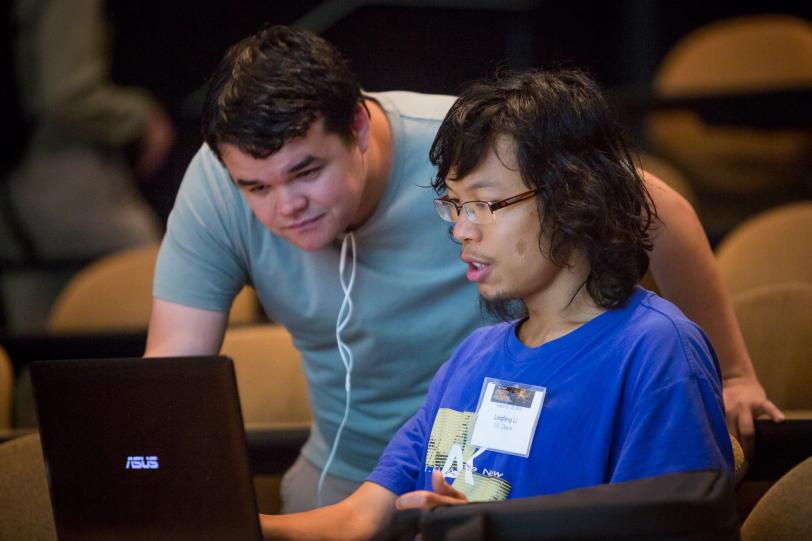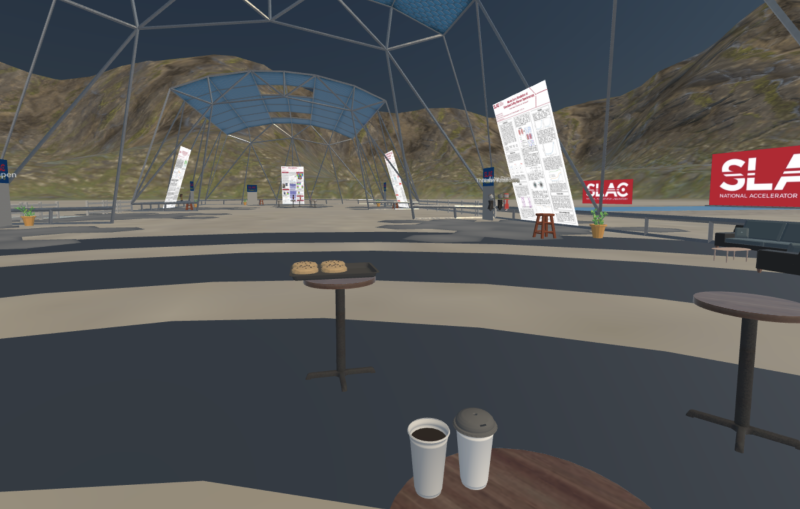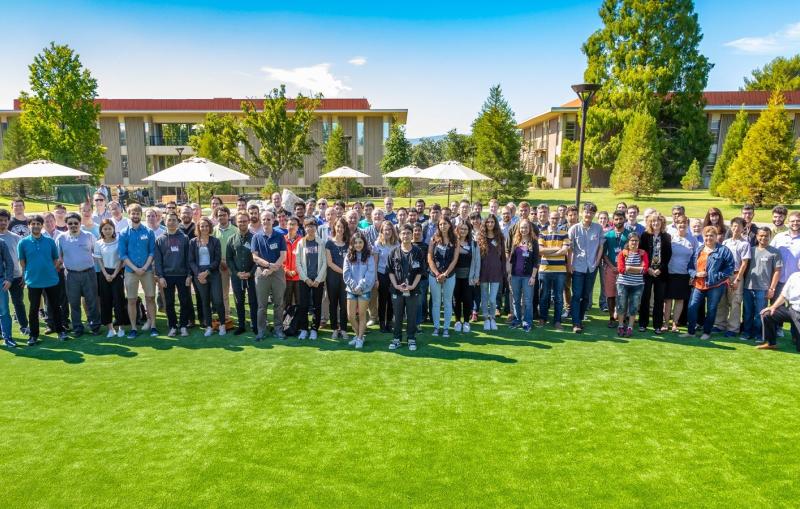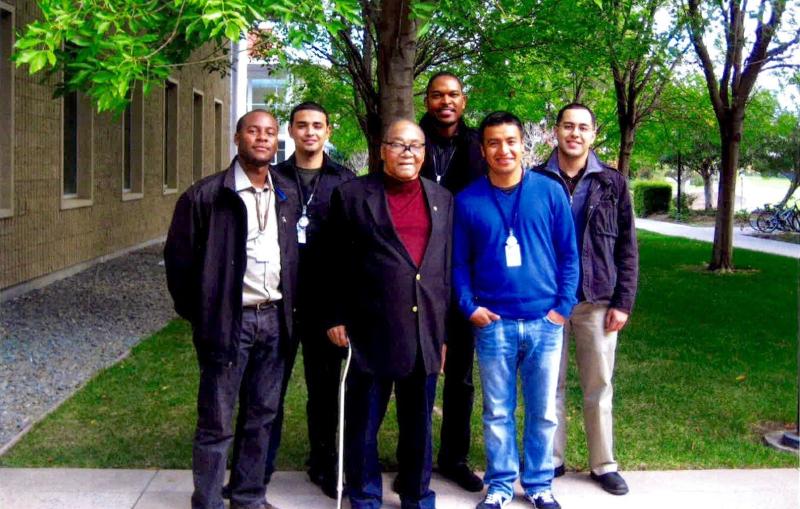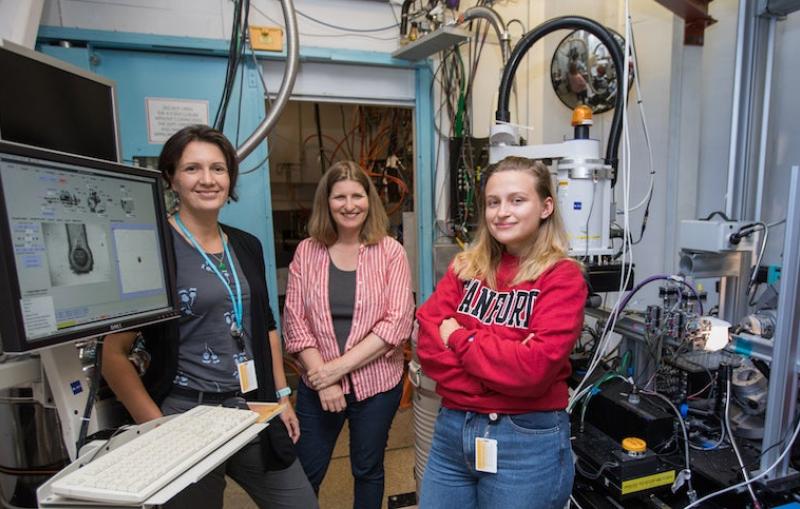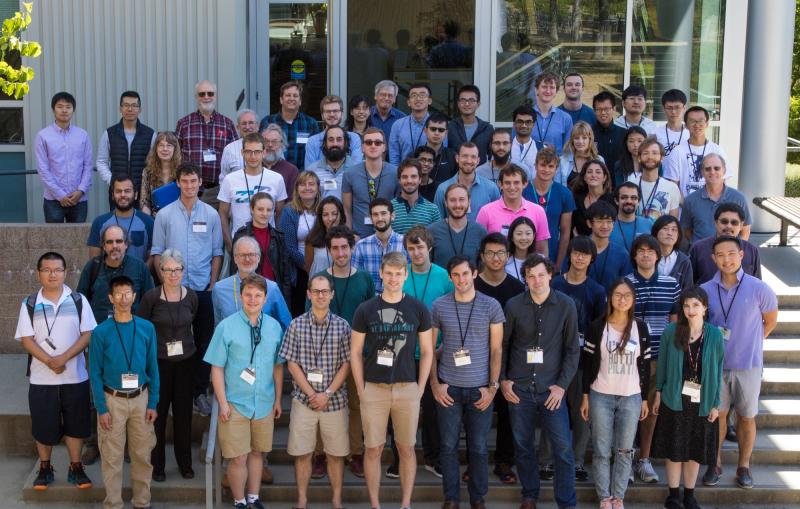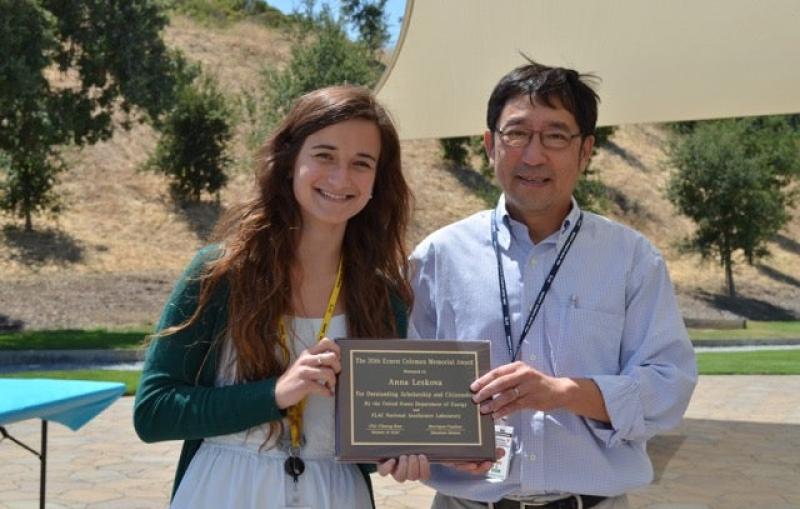SLAC Summer Institute Students Envision a New Energy Frontier
Participants of SLAC’s summer school learned about the next generation of collider physics through lectures, topical conference talks, student projects, poster sessions and tours.
Over a hundred physicists from around the world came to the Department of Energy’s SLAC National Accelerator Laboratory for two weeks in August to attend the 44th SLAC Summer Institute (SSI) on “New Horizons on the Energy Frontier.”
The summer school focused on how to unlock the secrets beyond the Standard Model through new collider physics — discussing the many challenges faced by the accelerator, experimental and theoretical communities.
“The theme this year was on future LHC runs and upgrades, as well as future colliders,” said Tom Rizzo, SSI organizer and head of SLAC’s Theoretical Physics group. “There’s been a lot of discussion about building a 100 TeV proton-proton collider, so we decided to have a school that included a discussion of potential future facilities.” The Large Hadron Collider (LHC) is the world's most powerful particle accelerator at CERN, the European particle physics laboratory.
The SSI participants enjoyed a wide range of learning opportunities, including lectures, topical conference talks, discussion sessions, student projects, student poster sessions and tours.
“The SLAC Summer Institute isn’t a pure student lecture school for textbook knowledge,” said Su Dong, professor of particle physics and astrophysics and a co-organizer of SSI. “It provides a broad tour of current research frontiers to inspire concrete research ideas beyond the classroom.”
A key part of the summer school was the student projects, which were devised by the SSI organizers to give students a deeper, hands-on learning experience. Teams of about six students worked together for several afternoons on their assigned projects and then presented their results.
For instance, Heidelberg University graduate student David Gerick and his teammates investigated the benefits of using a high-resolution, time-of-flight detector in future high-luminosity colliders like the HL-LHC. “Our project took a lot of time, but I think it was a really nice part of the institute. We were able to organize the time and how to do the project ourselves.”
Alison Reinsvold Hall, a graduate student at University of Notre Dame in Indiana, agreed that the project was a “big part” of SSI. Her team imagined the discovery of a new Z’ boson with a 3.5 TeV mass and investigated the possible theories behind it.
Hall learned the importance of working with people from different backgrounds. “Our project team had one theorist and five experimentalists,” she said. “On the first day, we weren’t really communicating very well. But it was very useful to discuss both his theoretical point of view and our experimentalist point of view to find the middle ground where we all understood and agreed. Even in something as specific as collider physics, you need all sorts of people to make the endeavor work.”
In the age of large particle physics experiments, being able to work effectively in a team is critical — that’s why Rizzo thinks the student projects are so important. “They learn how to collaborate, bringing different parts of everyone’s knowledge to the team effort. And they learn how to present results,” he said.
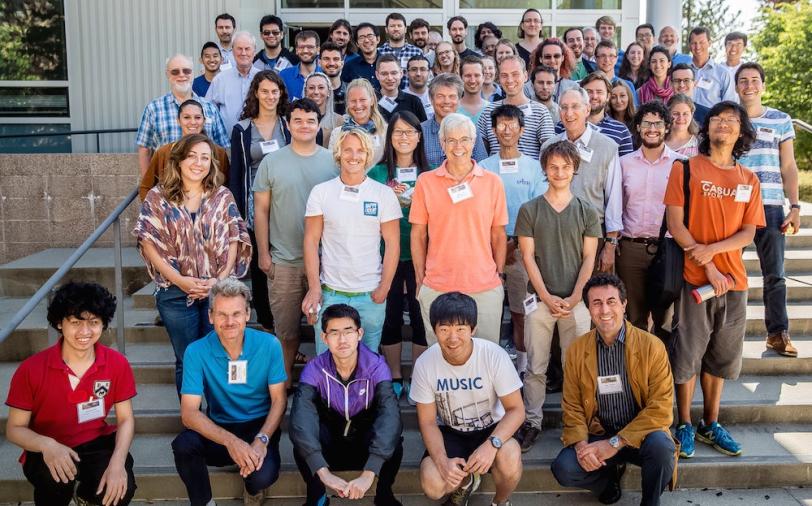
However, SSI isn’t all work and no play. One of the traditions is a contest question and funny answers are encouraged. This year’s question was, “What discovery made during the next five years would do the most to advance the field of high-energy physics and why?"
Hall’s answer earned some laughs by suggesting the “discovery” of 50 billion dollars to be given to the five greatest particle physicists as determined by a “Hunger Games style battle of the minds.” However, Gerick took home the prize by proposing the discovery of a fundamental particle with spin greater than two.
Of course, meeting and networking with colleagues is also important at SSI, particularly for participants early in their career. “I’ve benefitted a lot from meeting other students here,” Gerick said. “You have a lot of social opportunities, like the dinners and projects, when you can get to know people and talk about your daily work. It’s been a great opportunity.”
Contact
For questions or comments, contact the SLAC Office of Communications at communications@slac.stanford.edu.
SLAC is a multi-program laboratory exploring frontier questions in photon science, astrophysics, particle physics and accelerator research. Located in Menlo Park, Calif., SLAC is operated by Stanford University for the U.S. Department of Energy's Office of Science.
SLAC National Accelerator Laboratory is supported by the Office of Science of the U.S. Department of Energy. The Office of Science is the single largest supporter of basic research in the physical sciences in the United States, and is working to address some of the most pressing challenges of our time. For more information, please visit science.energy.gov.
